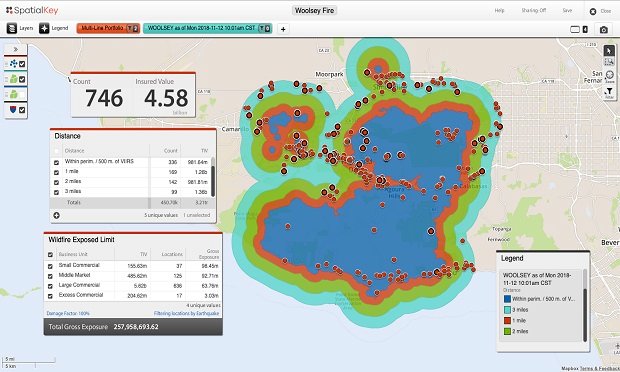Reuven Shnaps is vice president of professional services atEarnix.
|Maturing analytics tools and the recognition of the value in bigdata have created the perfect storm for insurers when it comes toenabling and leveraging business hindsight, insight, andforesight. While big data plus analytics tools offer aworld of opportunity when it comes to making optimal businessdecisions, the complexity of both will require time for insurers tofully understand, embrace, and leverage to their greatestbenefit.
|Analytics have evolved over time, with the industry now on itsthird generation of analytical tools. The firstgeneration was descriptive analytics. Commonly referredto as business intelligence tools, descriptive analytics enabledinsurers to consider what did happen to enable improved decisionsbased on lessons learned from past experience. Next camepredictive analytics which helped insurers better evaluate whatcould happen by analyzing the past, while applying (in simplifiedterms) 'what if' scenarios to predict the impact on futureperformance.
|With both early generations of analytics, insurers were stillleft with the task of determining the best decisions going forward.The newest generation is prescriptive analytics, also known as"optimization," which builds on the capabilities of descriptive andpredictive analytics by taking the analytical process one stepfurther.
|Given a set of desired business outcomes and the predictivemodels as inputs, prescriptive analytics will recommend thedecisions to be made in order to achieve the optimalresults. With each generation, analytics technology hasnot just improved in power and value, but has quickly become anecessity for insurers to remain competitive and agile. However, many insurers have yet to discover this paradigm shift indecision-making through the use of big data and the latestgeneration of analytical tools.
|To illustrate the value of big data combined with prescriptiveanalytics this article will take a closer look at pricingdecisions. One of the most important decisions an insurermakes is around pricing. The main factor in the pricing decision isrelated to the policy holders' risk. After all, if aninsurer doesn't get the risk right, little else matters.
|Yet, optimal pricing presents a predicament as there is more tothe pricing decision then getting the risk componentcorrectly. What are competitors doing relative topricing? How do I make sure I don't leave money on thetable by setting premium too low? If I set premium toohigh, do I risk losing market share? How do I determinepricing for maximum return while staying in good favor with theregulators?
|Companies have multiple business objectives that are drivingchange. For instance, profitability of the book of business mightbe the utmost goal; yet increasing market share in particularsegments while reducing operational costs and risk levels may alsobe key objectives. To achieve ideal business performance, one needsto consider all of the options when trying to determine an optimalprice. And, determining the best price is simply notpossible without the right technology.
|Using 'what-if' predictive analysis tools provides a good startif we were talking about changing a single or a few factors withina rate order. However when it comes to rating orders with tens oftables and hundreds of parameters, predictive analytics stops shortof optimal decision making and is too labor intensive.
|It is not humanly feasible to review all thescenarios with so many 'moving parts' in the form of variables andparameters. Much like an Internet search engine, prescriptiveanalytics automates this process in an efficient and timely mannerconverging to the optimal solution, thus enabling the decisionmaker to hone in the suggested rate changes that will achieve thedesired business goals while adhering to all the regulatory andbusiness constraints. .
|At first glance, prescriptive analytics has a lot ofskeptics. There is often disbelief of the capability ofthe technology to offer the best decision for achieving the desiredbusiness outcome, while others believe the technology may be toocomplex to effectively deploy within the organization. But,consider the concept of credit scoring. Not that long ago, itseemed awkward for financial institutions to evaluate a customer'srisk level based on a number crunched using some complexcalculation based on some wide range of data. It turned out thatthe early adopters of credit scoring as a risk metric enjoyed theearly competitive advantage. While there isalways an element of risk in being on the forefront of newtechnology adoption, insurers who embrace prescriptive analyticssooner rather than later will also gain the early advantage, whilethose who wait on the sidelines will eventually adopt prescriptiveanalytics to remain viable—much like the adoption cycle of creditscoring.
|Evidence of the increasing adoption rate for analyticstechnologies can be found in recently published research from bothEarnix and Strategy Meets Action (SMA). An Earnix survey of the top insurers in North America showed thatclose to half of the top 25 auto insurers are either currentlyusing or about to employ a price optimization strategy—feasiblypossible only through the use of prescriptive analytics.
|Data and Analytics in Insurance: P&C Plans andPriorities for 2013 and Beyond, a report published inMay, 2013 and authored by Mark Breading, a partner with SMA,indicated that almost half of all P&C insurers are nowinvesting in predictive models, with 47 percent of personal linesand 49 percent of commercial lines carriers investing, And, the SMAresearch also uncovered that almost one in four insurers have newanalytics projects underway for pricing models.
|Insurers who incorporate prescriptive analytics using priceelasticity models as well as utilize fraud and underwriting modelsare gaining a significant advantage over their competitors. Theseinsurers can better balance new business versus renewal businessand design optimal growth strategies.
|Insurance is a business of "survival of the fittest" and is soonto be "survival of the analytical." The investment inpeople, process and technology of predictive and prescriptiveanalytics will evolve from a nice to have today to a necessity inthe near future.
Want to continue reading?
Become a Free PropertyCasualty360 Digital Reader
Your access to unlimited PropertyCasualty360 content isn’t changing.
Once you are an ALM digital member, you’ll receive:
- All PropertyCasualty360.com news coverage, best practices, and in-depth analysis.
- Educational webcasts, resources from industry leaders, and informative newsletters.
- Other award-winning websites including BenefitsPRO.com and ThinkAdvisor.com.
Already have an account? Sign In
© 2024 ALM Global, LLC, All Rights Reserved. Request academic re-use from www.copyright.com. All other uses, submit a request to [email protected]. For more information visit Asset & Logo Licensing.








